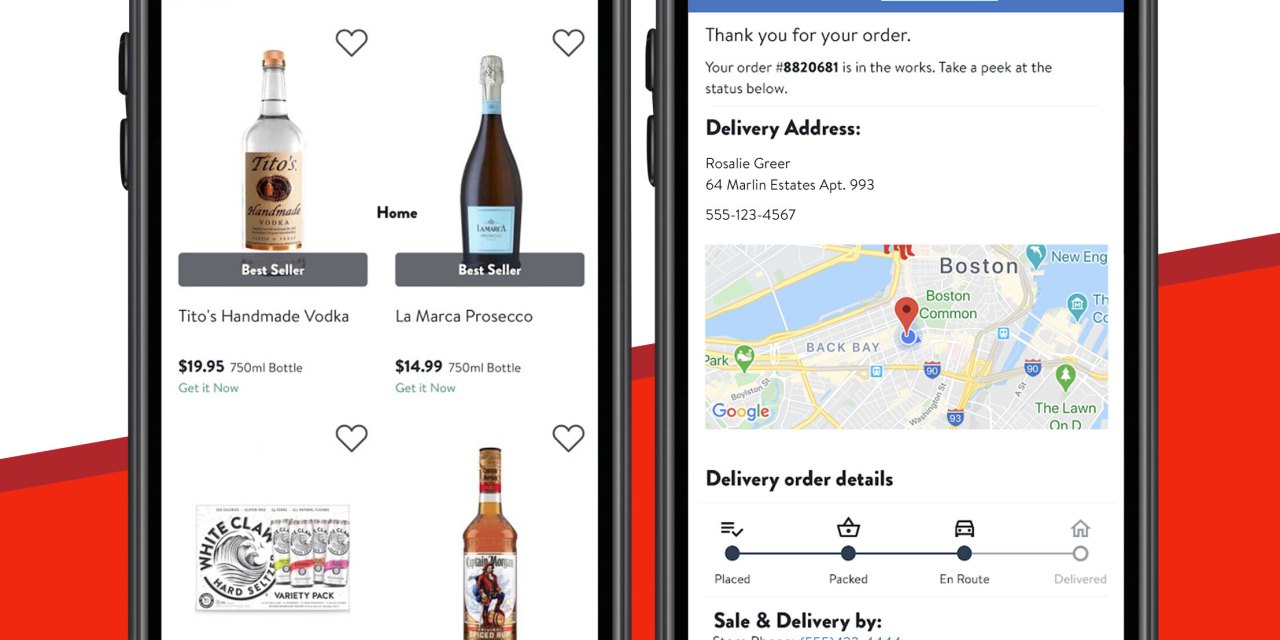How Anheuser-Busch and Drizly teamed up on a targeted ad partnership

Advertising in bars remains out of the question, so Anheuser-Busch has teamed up with Drizly to dominate your social feeds.
As alcohol delivery services like Drizly gained steam during the e-commerce alcohol rush of 2020, the platform began to experiment with different social ad campaigns. One of these digital strategies was a partnership with Facebook via its Collaborative Ads program, which rolled out shortly after the coronavirus hit. This marked a three-way collaboration, in which the data was made available to both the platform and the brand — in this case Drizly and Anheuser-Busch — alongside Drizly’s local liquor shop partners.
Collaborative Ads, which Facebook launched in 2019, allow brands that don’t have much of an e-commerce presence to create ads that direct users to another retailers’ website. Anheuser-Busch decided to use the tool because it doesn’t have a strong standalone direct-to-consumer presence and its bars and restaurants ad budgets were reallocated to off-premise channels like delivery startups when the pandemic first began. That was also when traditional advertising channels, like linear TV, were disrupted due to the lack of sporting and live events.
Even while some venues have reopened, on-premise advertising remains low. At its most recent earnings report, Anheuser Busch parent AB Inbev said that it’s seen “a rapid acceleration in trends such as online B2B platforms, e-commerce and digital marketing.” This has created an opportunity for platforms like Drizly to become a bigger marketing player.
Cathy Lewenberg, Drizly’s chief operating officer, told Modern Retail that the company has received a boost in marketing interest from large alcohol players, such as Diageo and Bacardi. “They’ve all doubled down on investing in off-premise advertising with us,” she said. Facebook’s Collaborative Ads, she said, allows the company to “target the right audience and sell alcohol in a compliant way.”
For an alcohol brand, targeting is key. “With Collaborative Ads, we’re able to target specific zip codes and 21-plus users that also happen to like specific alcohol from a company’s portfolio,” said Edlynne Laryea, head of CPG, food & beverage at Facebook. For example, a user whose data history reflects their taste for imported beer will be shown Drizly ads for AB-owned Stella Artois.
Following the campaign’s rollout in spring 2020, Drizly saw incremental increases in new monthly shoppers. The spike peaked in the third quarter of 2020, seeing seven times more sales compared to January and February 2020. Anheuser-Busch saw a 28% lift in purchase conversions for Bud Light and an 11% bump in Michelob Ultra orders since this past spring.
Ad position: web_incontent_pos1
Andrew Lipsman, principal analyst at eMarketer, said that this marketing partnership is another “good example of the strong targeting capabilities of Facebook.” The alcohol industry has many advertising advertising restrictions, — Facebook’s targeting are likely to become more popular among both booze brands and platforms.
In the coming year, these types of local ad campaigns will be a big part of Drizly’s marketing strategy –, along with heavily investing in improving its mobile app by doubling the size of the tech team in 2021. With this, it will continue to seek out large alcohol brands looking to invest more in digital. “We don’t believe this is reverting,” Lewenberg said. “The omnichannel concept is just hitting alcohol, so this is just the beginning.”

